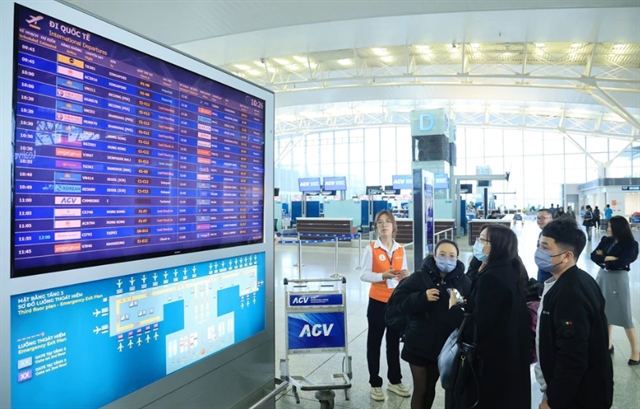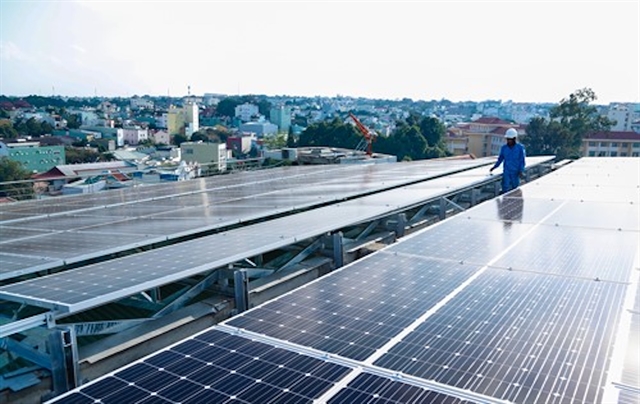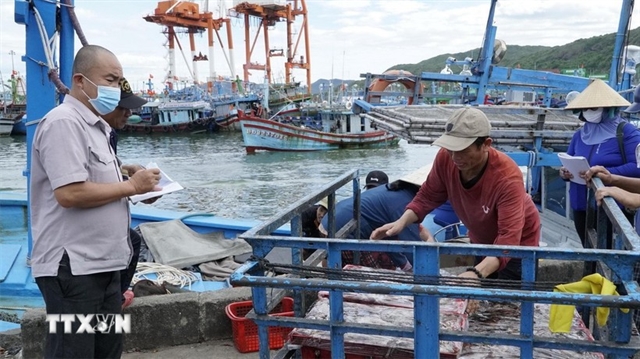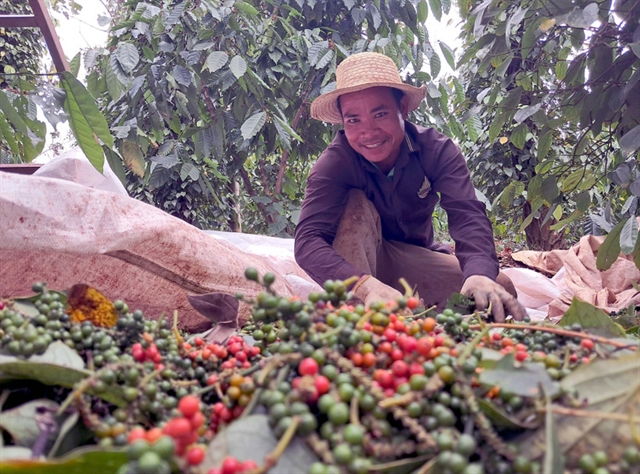 Environment
Environment

The uneven distribution of water resources in Việt Nam not only poses risks to human lives and property, but also leaves many regions facing environmental sanitation issues and a shortage of clean water. Nguyễn Minh Khuyến, Deputy Director of the Water Resource Management Department, spoke to Vietnam News Agency about the solutions to address these existing problems.

|
| Nguyễn Minh Khuyến, Deputy Director of the Water Resource Management Department. Photo dwrm.gov.vn |
How do you assess the current situation of water resource exploitation and usage, as well as the scarcity and difficulties related to water resources in areas frequently affected by natural disasters?
Data from the World Bank shows that Việt Nam has approximately 840 billion cubic meters of water resources annually. However, this resource isn’t evenly distributed across regions. The water that can be used is not the same across regions depending on seasons.
In the dry season, the water availability only accounts for 15 to 20 per cent of the total and in some areas, it even drops below 15 per cent.
Việt Nam's water resources are facing overabundance, shortage and pollution in different places. For example, the water remaining in the Mekong River Delta is now less than 10 per cent, which led to severe saltwater intrusion in 2015 and early 2016.
The water resources in the Mekong Delta and the Central Highlands are plenty but these regions still face challenges in accessing water due to geographical features and deep intrusion of saltwater. Water scarcity, particularly during the dry season, has been a continuous issue in recent years.
Currently, some areas still struggle to access clean water. The mountainous province of Sơn La has a water resource of 19 billion cubic meters per year, but the water shortage is still experienced in certain areas of the Mộc Châu District. The western mountainous regions of Nghệ An and Hà Tĩnh provinces, despite having abundant water resources, still lack about 95 million cubic meters of water annually.
What specific contents are outlined in the draft Law on Water Resources (amended) to ‘ensure sustainable water resources supply and management as well as water sanitation conditions for people’ (SDG 6) by 2030?
The Sustainable Development Goal (SDG6) developed by the United Nations is to ‘ensure sustainable water resources supply and management as well as water sanitation conditions for people’ by 2030. It includes six targets, which are water efficiency, addressing water scarcity, restoring water-related ecosystems, engaging local communities to improve water management, incentives for water-saving and efficient resource use and the establishment of river basin organisations.
To ensure water security and work towards achieving the goals of SDG 6, Conclusion No 36-KL/TW of the Party Central Committee on water resource security and dam safety up to 2030, with a vision to 2045, clearly outlines solutions to ensure water quantity and quality to serve all citizens' needs, including those for production, especially in critical economic sectors.
By 2030, all of the urban population and 80 per cent of the rural population will have access to clean water.
The Conclusion also highlights the responsibilities of relevant ministries and departments in improving planning quality and monitoring these plans. Preventing and minimising harmful effects caused by water such as floods, droughts and pollution are tasks we have been doing and need to monitor more closely.
To achieve the goals, the Ministry of Natural Resources and Environment has developed plans to propose improvements to the institutional framework, enhance the effectiveness of management to protect water resources, restore depleted and polluted water sources and ensure water security.
The ministry will also focus on key tasks including implementing comprehensive inter-provincial river basin planning approved by the Prime Minister and allocating resources to collect and treat urban and craft village wastewater. Furthermore, the ministry will closely monitor wastewater discharge from production and service establishments.
Underground water resources in many places are currently over-exploited for daily life and production purposes under the pressure of socio-economic development, especially in large urban areas. Many river and stream sources in river basins suffer from depletion, scarcity, and frequent pollution due to climate change. What drastic solutions are needed to enhance water resource protection and ensure water security for the country's socio-economic development in the future?
Water resource depletion, scarcity, pollution and loss of water security are global concerns. Many nations always prioritise water resource protection and improve water security.
We need to strengthen the monitoring of the water resources. Investing and quickly implementing the automated monitor water quality and quantity system and the system of information, digital models and decision support tools is also crucial. They are essential for the timely and effective implementation of water resource protection measures. Pilot projects should be initiated to restore depleted and polluted water sources in specific river basins such as the Bắc Hưng Hải, Nhuệ - Đáy and Ngũ Huyện Khê rivers. Furthermore, improving institutional frameworks through the proposed amendment to the Water Resources Law is necessary for sustainable water resource management.
Currently, the draft amendment to the Water Resources Law, which is being presented to the National Assembly, includes several provisions.
It covers activities aimed at protecting both surface and groundwater, defines the functions of water sources to serve as the basis for identifying water resource protection and restoration measures.
Moreover, it regulates the discharge of wastewater into water sources to ensure environmental protection laws. The draft also mentions the restoration of water sources to revive natural ecological functions and cultural and historical values related to water. It encourages organisations and individuals to actively participate in the protection and restoration of depleted, polluted and scarce water sources. – VNS

.jpg)


